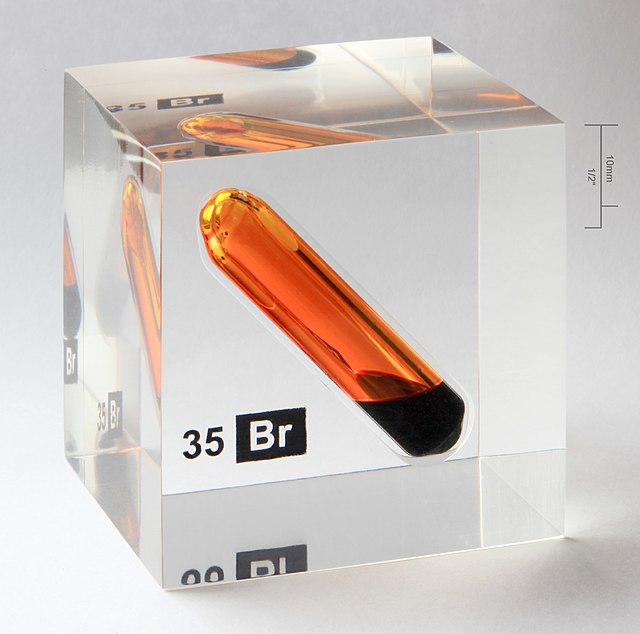A bromide ion is the negatively charged form (Br−) of the element bromine, a member of the halogens group on the periodic table. Most bromides are colorless. Bromides have many practical roles, being found in anticonvulsants, flame-retardant materials, and cell stains. Although uncommon, chronic toxicity from bromide can result in bromism, a syndrome with multiple neurological symptoms. Bromide toxicity can also cause a type of skin eruption, see potassium bromide. The bromide ion has an ionic radius of 196 pm.
Dermatitis reactions to bromide, all except lower right
Bromine is a chemical element; it has symbol Br and atomic number 35. It is a volatile red-brown liquid at room temperature that evaporates readily to form a similarly coloured vapour. Its properties are intermediate between those of chlorine and iodine. Isolated independently by two chemists, Carl Jacob Löwig and Antoine Jérôme Balard, its name was derived from the Ancient Greek βρῶμος (bromos) meaning "stench", referring to its sharp and pungent smell.
Liquid and gas bromine inside transparent cube
Antoine Balard, one of the discoverers of bromine
View of salt evaporation pans on the Dead Sea, where Jordan (right) and Israel (left) produce salt and bromine
Baltimore's Emerson Bromo-Seltzer Tower, originally part of the headquarters of Emerson Drug Company, which made Bromo-Seltzer





